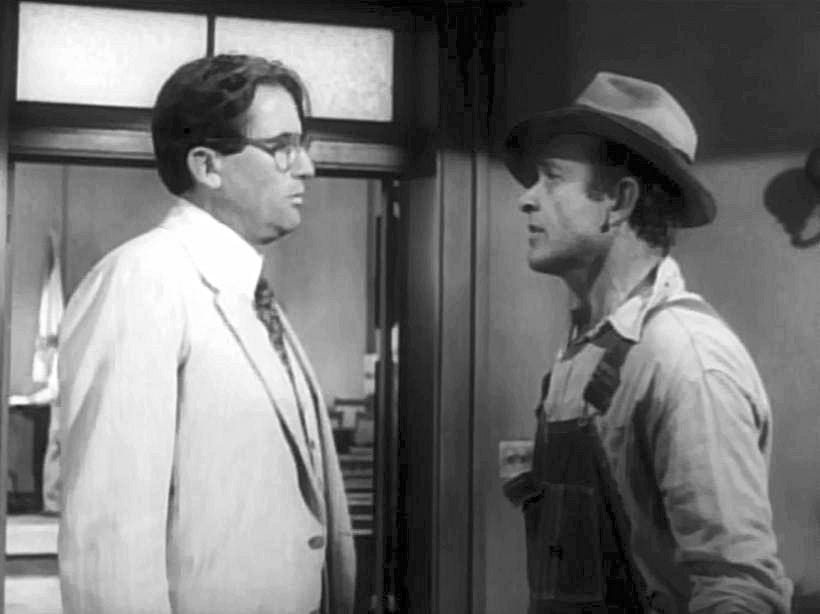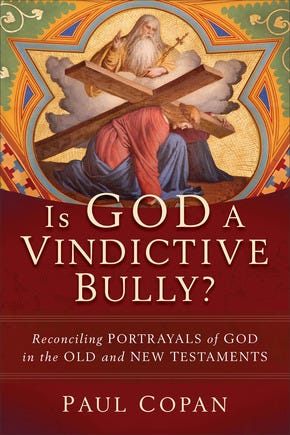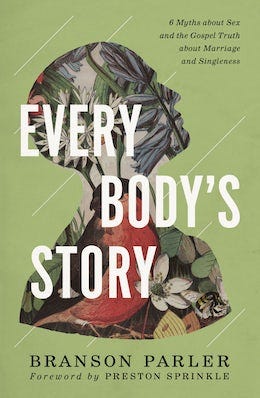*This article appears courtesy of The Society for Women of Letters.
On a lamppost outside my office window at the courthouse where I work, the same mockingbird alights, day after day, and trills, warbles, and sings his little heart out as I work. Especially during stretches of difficult cases, I like to think he knows how much joy his song brings me every week. My courthouse mockingbird combined with the brisk chill of fall winds in the air keep centering my thoughts on the Halloween climax of Harper Lee’s masterpiece To Kill a Mockingbird that highlights the self-sacrificial acts of Boo Radley.
In the legal world, Atticus Finch rightly commands every attorney’s respect as our fictional hero. We cheer as he faces down, both literally and figuratively, Maycomb’s rabid dogs and demons and hail his technical prowess in the sweltering summer courthouse scene where he courageously defends Tom Robinson. But as summer fades into fall, we should also reflect on the novel’s other, more silent hero, Boo Radley.
Boo features in To Kill a Mockingbird as an object of curiosity and fascination for the children. The celebrated film version, commemorating its 60th anniversary this year and featuring Gregory Peck as an Atticus Finch so faithful to Lee’s depiction of her own father that she refused to allow it ever to be remade, unfortunately truncates Boo’s story line so much that viewers are left to wonder to who he actually is and why he is perpetually trapped in his house. This cinematic compression of Lee’s original narrative renders Boo window dressing for the final scene, despite his pivotal role.
The book, by contrast, immediately informs the reader of Boo’s backstory and fleshes out his relationship with Scout, Jem, and Dill. Arthur “Boo” Radley was a rambunctious youth whose typical teenage antics garnered a needlessly harsh reaction from his family.[1] Instead of allowing the local court to send Boo off temporarily to the state industrial school with his fellow teenage miscreants, Boo’s father asked for him to be placed instead under house arrest—a sentence he then abused to imprison Boo for fifteen years.[2] His mind broken, Boo eventually stabbed his father with a pair of scissors and was briefly placed in the town jail.[3] Any hope he had of escaping from his family after his father’s death and regaining a normal life vanished when his brother Nathan returned home and continued Boo’s imprisonment in the Radley family home.[4] Out of Maycomb’s sight, Boo fades from the minds of Maycomb’s townsfolk.
Except for Scout, Jem, and Dill. They initially judge him a monster, and their morbid curiosity leads them to seek him out. Although their contacts with him are fleeting, their perception of him gradually changes. Taken by the children’s attention, Boo leaves them presents in the hole of an oak tree at the edge of the Radley property: dolls, gum, a watch, a knife.[5] The children come to view him as a benevolent force and continue their sporadic interactions with him: they attempt to leave him a letter and try to peer into his house. Despite Atticus’s urgings not to bother him, Scout, Jem, and Dill become distant friends with Boo. Although Lee never gives any direct insight into Boo’s perspective, it is not a stretch for the reader to understand that the town recluse comes to care deeply for these children, the only people in Maycomb who actively try to form a relationship with him.
Thus, on Scout and Jem’s “longest journey together,” as Lee characterizes it at the end of the novel, who else but Boo comes to their rescue?[6] On their way home from their school’s Halloween play, Mayella Ewell’s father, Bob—enraged by Atticus exposing his abuse of Mayella at Tom Robinson’s trial—tries to kill them. Witnessing the attack, Boo launches into action and defends Scout and Jem. He arrives on the Finch’s doorstep carrying Jem, unconscious after Bob viciously broke his arm, with Scout trailing behind. Sheriff Heck Tate then discovers Bob Ewell dead at the site of the attack “with a kitchen knife stuck up under his ribs.”[7] Atticus, in shock from the attack but ever the consummate attorney, insists a trial must be held, but the sheriff stops him cold: “To my way of thinkin’, Mr. Finch, taking the one man who’s done you and this town a great service an’ draggin’ him with his shy ways into the limelight—to me, that’s a sin. It’s a sin and I’m not about to have it on my head.”[8]
By connecting Sheriff Tate’s comments to Atticus’s earlier admonishment to the children that shooting a mockingbird is a “sin,” Scout recognizes that involving Boo in such a trial would be “‘sort of like shootin’ a mockingbird, wouldn’t it?’”[9] Lee thus identifies the mockingbird, her symbol for the good and innocent in the world—which she previously used to symbolize Tom Robinson, the “senseless[ly] slaughter[ed] . . . songbird[]” unjustly convicted of Mayella’s rape—with Boo as well, whose own family has abused and imprisoned him.[10] This time, though, the sheriff refuses to allow another destructive trial: “Let the dead bury the dead this time, Mr. Finch.”[11] Far be it from a lawyer to endorse vigilante justice, but I believe Lee demonstrates here that a higher justice is at play in human affairs, one greater than our merely human laws and courts, which can only serve as incomplete reflections of it. Our part is to accept its judgment when it chooses to supersede our own imperfect justice system by working through the righteous actions of the Boo Radleys of the world to end the violence perpetrated by the Bob Ewells of the world.
The play version of To Kill a Mockingbird, rather than ending with Boo’s self-sacrificial actions, tacks on an unnecessary epilogue that sees the adult Scout working in the civil rights movement. This is a mistake, certainly not because the movement was unimportant, but because it detracts from Lee’s original climax. Boo’s self-sacrificial actions exhibit the purity of heart, so vital to human flourishing, that Lee wishes we could recover. Seeing Bob Ewell’s brutal attack on the innocent Scout and Jem, Boo places himself in harm’s way by springing to their rescue, and on Halloween, he gives them the most beautiful gift yet. While standing on the Radley porch after walking Boo home, Scout replays the novel’s events through his eyes:
Neighbors bring food with death and flowers with sickness and little things in between. Boo was our neighbor. He gave us two soap dolls, a broken watch and chain, a pair of good-luck pennies, and our lives. . . . Atticus was right. One time he said you never really know a man until you stand in his shoes and walk around in them. Just standing on the Radley porch was enough.[12]
Scout’s friendship with Boo thus equips her to learn Atticus’s most important lesson. Although she laments that “neighbors give in return” and she and Jem “never put back into the tree what we took out of it: we had given him nothing, and it made me sad,”[13] she underestimates the growth in character both the children and Boo experience as a result of their friendship. In this porch scene, Lee offers readers the double vision of seeing from the eyes of both Scout and Boo, two of its most innocent characters. In it, we catch a glimpse of Jesus’s second greatest commandment, to love our neighbors, fulfilled in the purity and innocence of little children, to whom belongs the kingdom of heaven.[14]
As Halloween draws near this season, as we place pumpkins and scarecrows on our own porches and prepare for neighborhood children to ring our doorbells and gather treats from us, let us reflect on the example of Boo Radley and consider the gifts we can give to the least among us, in perhaps smaller but no less important ways.
Notes
[1] Harper Lee, To Kill a Mockingbird (2002; repr., New York: Harper Perennial Modern Classics, 1960), 11.
[2] Ibid.
[3] Ibid., 12.
[4] Ibid., 13.
[5] Ibid., 68.
[6] Ibid., 291.
[7] Ibid., 305.
[8] Ibid., 317.
[9] Ibid., 103, 317.
[10] Ibid., 275.
[11] Ibid., 317.
[12] Ibid., 320, 321.
[13] Ibid., 320.
[14] Mark 12:31; Matt. 19:14.
— Megan Joy Rials is a Christian apologist and research attorney in Baton Rouge, Louisiana, and is working toward completion of a Master of Arts in cultural apologetics from Houston Christian University. She is a regular contributor for and Board member of An Unexpected Journal, and serves as Content Editor on the Leadership Council for the Society for Women of Letters. In addition to An Unexpected Journal, her work has appeared in Perichoresis and the Louisiana Law Review, where she served as Production Editor of Volume 77.
image: To Kill a Mockingbird (1962) trailer 2
*Sponsored posts
Is God a Vindictive Bully?
Reconciling Portrayals of God in the Old and New Testaments
Critics outside the church often accuse the Old Testament God of genocide, racism, ethnic cleansing, and violence. But a rising tide of critics within the church claim that Moses and other “primitive,” violence-prone prophets were mistaken about God's commands and character. Both sets of critics dismiss this allegedly harsh, flawed, “textual” Old Testament God in favor of the kind, compassionate, “actual” God revealed by Jesus. Are they right to do so?
Following his popular book Is God a Moral Monster?, noted apologist Paul Copan confronts false, imbalanced teaching that is confusing and misleading many Christians. Copan takes on some of the most difficult Old Testament challenges and places them in their larger historical and theological contexts. He explores the kindness, patience, and compassion of God in the Old Testament and shows how Jesus in the New Testament reveals not only divine kindness but also divine severity. The book includes a detailed Scripture index of difficult and controversial passages and is helpful for anyone interested in understanding the flaws in these emerging claims that are creating a destructive gap between the Testaments.
“Do you have a problem with something, or a lot of things, in the Old Testament? Paul Copan has provided a virtual encyclopedia of helpful answers to frequently asked questions that trouble many readers. He tackles a whole range of objections that arise both from those who claim broad Christian allegiance to the Bible as a whole and from those who make no such claim whatsoever and use the Old Testament as a major reason for their hostility. This is a thoroughly detailed reference work that those of us who teach or preach the Old Testament will turn to frequently, or point others to, when such questions are aired. An excellent resource indeed!”
— Christopher J. H. Wright, global ambassador and ministry director, Langham Partnership; author of Old Testament Ethics for the People of God
See our Worldview Bulletin excerpt from Is God a Vindictive Bully? here.
Find Is God a Vindictive Bully? at Amazon, Baker Publishing Group, and other major booksellers.
Every Body's Story
6 Myths About Sex and the Gospel Truth About Marriage and Singleness
In Every Body's Story, Branson Parler focuses on three predominant myths of sexuality in our secular age—individualism, romance, and materialism—and three dominant myths in Christian circles—anti-body theology, legalism, and the sexual prosperity gospel—exploring how those stories shape our practice. Our views of sexuality and our practices around sex are never just about sex. How we use and view our bodies reveals who/what we think God is (or is not) and who we are.
If we truly understand the biblical logic of marriage, sexuality, and singleness—that they are meant to embody the gospel—then we will better understand why this witness is so vital. As God's self-giving faithfulness is put on display by both married and single Christians, those formed by our secular age will have to ask: What if it's true? What if there's more? What if God really does love us that much? Rather than viewing our sexuality as an isolated matter of ethics, we can see how the gospel places our sexuality in the context of God's rescue mission of the world.
“It is hard to imagine a more timely and articulate theology of bodies, sex, and marriage. Branson Parler has masterfully diagnosed what ails both our culture and our churches' sexual thinking and practice. Every Body's Story is biblically adept, historically aware, culturally astute, and philosophically sophisticated. At the same time, it is imminently practical and hauntingly convicting. I truly wish someone would have given me this book decades ago!”
— John Nugent, professor of Bible and theology, Great Lakes Christian College
See our Worldview Bulletin excerpt from Every Body’s Story here.
Find Every Body’s Story at Amazon, Zondervan, and other major booksellers.
Subscribe to or Support The Worldview Bulletin
Your support makes The Worldview Bulletin possible! We couldn’t do this without the support of you, our readers. We would be grateful for your help in any of the following ways:
Subscribe to our monthly newsletter and receive exclusive content from our team of world-class scholars and access to our full archive of scores of articles that provide a master class in Christian apologetics. You can also give a gift subscription to a family member or friend who would benefit, or subscribe a group of three or more and save 20%.
Make a one-time or recurring donation.
Become a Patron and receive signed books from our team members.
“The Worldview Bulletin shines a brilliant light of truth in a darkening world. These authors, who are experts in their field, consistently provide logical, rational, moral and most importantly biblical answers, in response to the deceitful narratives we are bombarded with daily. I have found it a great source of enlightenment, comfort, and inspiration.”
— B. Shadbolt, Subscriber, New South Wales, Australia
“I find The Worldview Bulletin very stimulating and would encourage all thinking Christians to read it.”
— John Lennox, emeritus professor of mathematics, University of Oxford, emeritus fellow in mathematics and philosophy of science, Green Templeton College, author of Cosmic Chemistry: Do God and Science Mix? (Lion)
Advertise in The Worldview Bulletin
Do you have a book, course, conference, or product you’d like to promote to 5,200 Worldview Bulletin readers? Click here to learn how. We’re currently booking for November and December.






